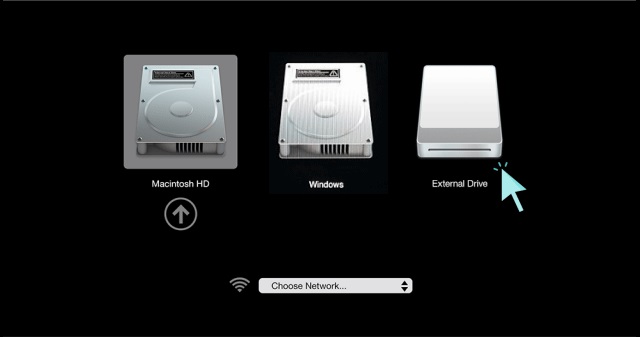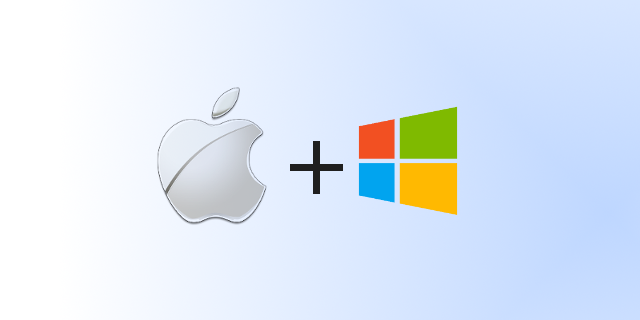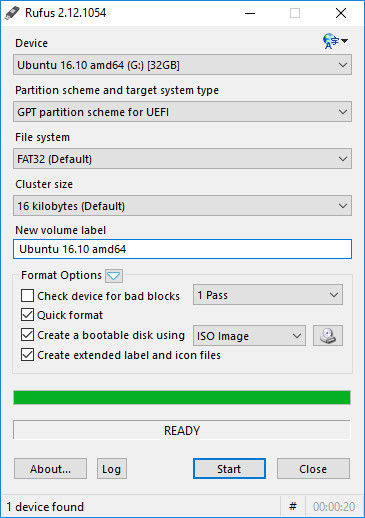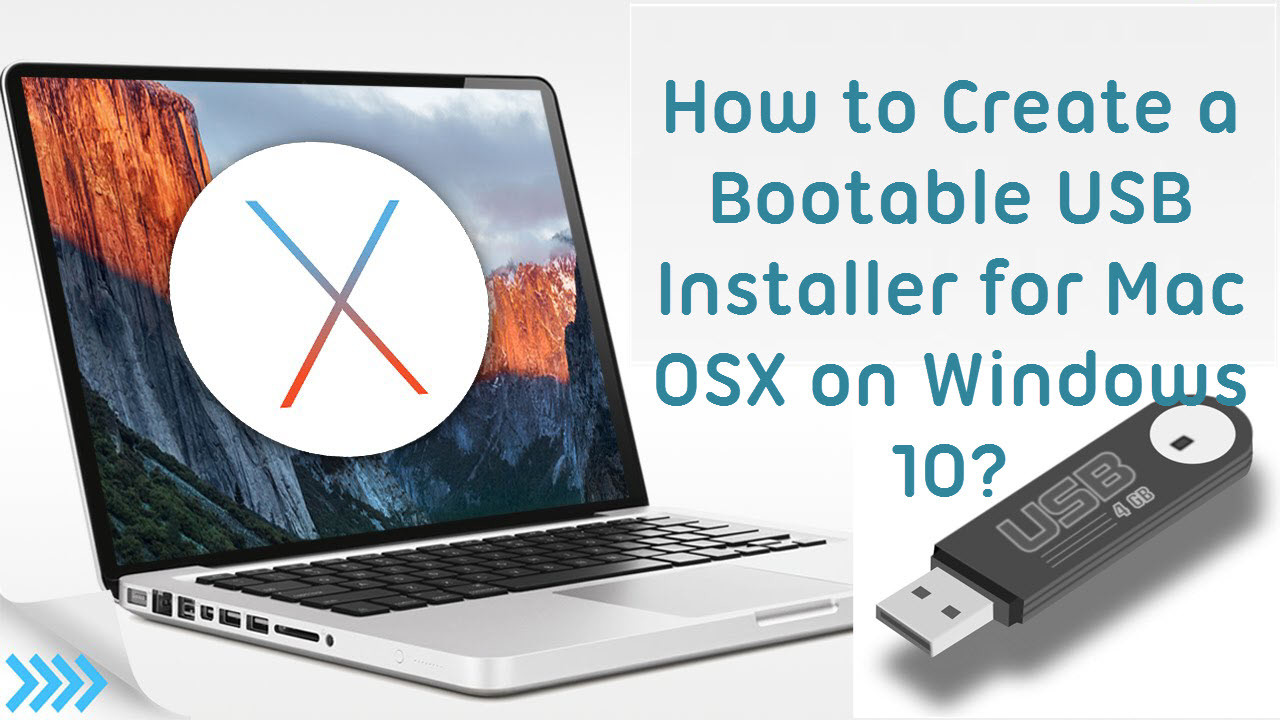Every operating system can crash at one time or another. While it's safe to say that macOS is more stable than Windows, it can still be affected by issues that prevent your computer from booting up. In such cases, you might need to boot your Mac from a USB flash drive to fix the problem. This article shows you two ways to boot Mac from external USB stick, as well as some troubleshooting tips in case Mac won't boot from the target USB.
Install Mac Os From Usb

Boot Mac from USB Option l: Startup Manager

If your Mac won't boot up normally, you can set it to boot from a different drive, such as a USB stick containing macOS installation files in bootable format. The drive will have to contain a version of the OS that is compatible with the Mac. As long as you have the bootable installation USB, you can start your Mac from the USB by accessing the Startup Manager. Here are the steps to be followed:
Step 1: Insert the bootable USB into Mac and power it on.
Step 2: As soon as the startup process begins, hold down the Option (alt) key and keep it depressed until you see the Startup Manager on your screen. If there is a firmware password on your Mac, hold down the Option key until you're asked to enter that password.
Step 3: You will now see the various startup disk options, and your USB will be listed there. If you click on the Up arrow right below the icon for the USB, the computer will only startup once using this disk. If you press and hold down the Control key while making your selection, it will be saved, and your computer will boot from the USB every time, as long as it is left in the computer.
At this point, you can also use the Mac installation disk to boot your Mac from. It will appear as EFI Boot, and it works on all computers running macOS 10.9 or higher.
Dec 20, 2018 Also, check to see what ports you have on your Mac. The 12' MacBook has a single USB-C port, while MacBook Pro models from 2016 and later feature USB-C ports exclusively. Fortunately, there are USB-C drives available, or you can use a USB-C to USB-A adapter. How to create a bootable macOS High Sierra installer drive Put the macOS High Sierra installer on an external USB thumb drive or hard drive and use it to install the operating system on a Mac. Macos sierra sierra mac apple how to boot drive usb. If you want to do a clean install of macOS Sierra, or you have multiple Macs to install it on, then a bootable flash drive for is your.
Boot Mac from USB Option 2: Safe Mode/Recovery Mode
As an alternative, you can start your Mac in Safe Mode (Recovery Mode). This will allow the system to automatically detect and repair directory issues. Safe Mode will only allow required kernel extensions to load, preventing login items and startup items to load automatically. It can also help you isolate the issue depending on whether or not the issue goes away in Safe Mode. If the issues you have during normal startup don't show up in safe mode, they are most likely fixed. That means you can reboot normally and your system should be back to normal.
Step 1: Start your Mac and hold down the Shift key. You will see the Apple logo on your screen.
Step 2: When you see the login screen, you can release the Shift key and login to your Mac.

Step 3: To check whether your Mac has booted into Safe Mode, click on the Apple logo on the top left and then on About this Mac. In the window that opens, click on System Report… You should be able to see this:
How to Fix Mac Won't Boot from USB Drive
Sometimes Mac won't boot from USB as expected. Nxt mindstorms for mac os x. If you are unable to select a different startup disk, it's possible that your disk is not showing up in Startup Manager. If you try Method 1 above but don't see your USB drive listed there, it could mean one of the following problems:
Compatibility: It is possible that the version of macOS or Mac OS X that you have on the USB drive is not compatible with the hardware. That means you won't be able to see it in the Startup Manager so, of course, you won't be able to boot from it. In such cases, you may need to burn a compatible macOS version on USB drive in order to be able to boot Mac from it.
Startup Security Utility: In certain cases where your Mac has the Apple T2 Security Chip (2018 and later devices), it may be your Startup Security Utility settings that are preventing you from booting from USB. In this situation, restart your Mac and hold down the Command + R keys when you see the Apple logo. This will put your Mac into Recovery mode. In macOS Utilities, go to Utilities >Startup Security Utility and sign in as admin. Under External Boot, select the second option - Allow Booting from External Media.
Option ROM Firmware: Another known issue is that Option ROM firmware will not load in Startup Manager until you press certain keys manually. To do this, use Method 1 to access Startup Manager. Once you are there, press Option-Shift-Command-Period. You should now be able to see the USB drive. This is not exactly a problem as much as a feature. If the USB contains Option ROM firmware, you will need to press those keys everytime to boot from your pen drive.
These two methods and the troubleshooting tips should allow you to boot from USB or in Safe Mode so you can then isolate the problem that's preventing your Mac from booting up normally.
With a bootable Ubuntu USB stick, you can:
- Install or upgrade Ubuntu, even on a Mac
- Test out the Ubuntu desktop experience without touching your PC configuration
- Boot into Ubuntu on a borrowed machine or from an internet cafe
- Use tools installed by default on the USB stick to repair or fix a broken configuration
Creating a bootable USB stick is very simple, especially if you're going to use the USB stick with a generic Windows or Linux PC. We're going to cover the process in the next few steps.
Apple hardware considerations


Boot Mac from USB Option l: Startup Manager
If your Mac won't boot up normally, you can set it to boot from a different drive, such as a USB stick containing macOS installation files in bootable format. The drive will have to contain a version of the OS that is compatible with the Mac. As long as you have the bootable installation USB, you can start your Mac from the USB by accessing the Startup Manager. Here are the steps to be followed:
Step 1: Insert the bootable USB into Mac and power it on.
Step 2: As soon as the startup process begins, hold down the Option (alt) key and keep it depressed until you see the Startup Manager on your screen. If there is a firmware password on your Mac, hold down the Option key until you're asked to enter that password.
Step 3: You will now see the various startup disk options, and your USB will be listed there. If you click on the Up arrow right below the icon for the USB, the computer will only startup once using this disk. If you press and hold down the Control key while making your selection, it will be saved, and your computer will boot from the USB every time, as long as it is left in the computer.
At this point, you can also use the Mac installation disk to boot your Mac from. It will appear as EFI Boot, and it works on all computers running macOS 10.9 or higher.
Dec 20, 2018 Also, check to see what ports you have on your Mac. The 12' MacBook has a single USB-C port, while MacBook Pro models from 2016 and later feature USB-C ports exclusively. Fortunately, there are USB-C drives available, or you can use a USB-C to USB-A adapter. How to create a bootable macOS High Sierra installer drive Put the macOS High Sierra installer on an external USB thumb drive or hard drive and use it to install the operating system on a Mac. Macos sierra sierra mac apple how to boot drive usb. If you want to do a clean install of macOS Sierra, or you have multiple Macs to install it on, then a bootable flash drive for is your.
Boot Mac from USB Option 2: Safe Mode/Recovery Mode
As an alternative, you can start your Mac in Safe Mode (Recovery Mode). This will allow the system to automatically detect and repair directory issues. Safe Mode will only allow required kernel extensions to load, preventing login items and startup items to load automatically. It can also help you isolate the issue depending on whether or not the issue goes away in Safe Mode. If the issues you have during normal startup don't show up in safe mode, they are most likely fixed. That means you can reboot normally and your system should be back to normal.
Step 1: Start your Mac and hold down the Shift key. You will see the Apple logo on your screen.
Step 2: When you see the login screen, you can release the Shift key and login to your Mac.
Step 3: To check whether your Mac has booted into Safe Mode, click on the Apple logo on the top left and then on About this Mac. In the window that opens, click on System Report… You should be able to see this:
How to Fix Mac Won't Boot from USB Drive
Sometimes Mac won't boot from USB as expected. Nxt mindstorms for mac os x. If you are unable to select a different startup disk, it's possible that your disk is not showing up in Startup Manager. If you try Method 1 above but don't see your USB drive listed there, it could mean one of the following problems:
Compatibility: It is possible that the version of macOS or Mac OS X that you have on the USB drive is not compatible with the hardware. That means you won't be able to see it in the Startup Manager so, of course, you won't be able to boot from it. In such cases, you may need to burn a compatible macOS version on USB drive in order to be able to boot Mac from it.
Startup Security Utility: In certain cases where your Mac has the Apple T2 Security Chip (2018 and later devices), it may be your Startup Security Utility settings that are preventing you from booting from USB. In this situation, restart your Mac and hold down the Command + R keys when you see the Apple logo. This will put your Mac into Recovery mode. In macOS Utilities, go to Utilities >Startup Security Utility and sign in as admin. Under External Boot, select the second option - Allow Booting from External Media.
Option ROM Firmware: Another known issue is that Option ROM firmware will not load in Startup Manager until you press certain keys manually. To do this, use Method 1 to access Startup Manager. Once you are there, press Option-Shift-Command-Period. You should now be able to see the USB drive. This is not exactly a problem as much as a feature. If the USB contains Option ROM firmware, you will need to press those keys everytime to boot from your pen drive.
These two methods and the troubleshooting tips should allow you to boot from USB or in Safe Mode so you can then isolate the problem that's preventing your Mac from booting up normally.
With a bootable Ubuntu USB stick, you can:
- Install or upgrade Ubuntu, even on a Mac
- Test out the Ubuntu desktop experience without touching your PC configuration
- Boot into Ubuntu on a borrowed machine or from an internet cafe
- Use tools installed by default on the USB stick to repair or fix a broken configuration
Creating a bootable USB stick is very simple, especially if you're going to use the USB stick with a generic Windows or Linux PC. We're going to cover the process in the next few steps.
Apple hardware considerations
Boot From Usb For Mac
There are a few additional considerations when booting the USB stick on Apple hardware. This is because Apple's ‘Startup Manager', summoned by holding the Option/alt (⌥) key when booting, won't detect the USB stick without a specific partition table and layout. We'll cover this in a later step.
Advanced SystemCare is not available for Mac but there are plenty of alternatives that runs on macOS with similar functionality. The most popular Mac alternative is CCleaner, which is free.If that doesn't suit you, our users have ranked more than 100 alternatives to Advanced SystemCare and 18 are available for Mac so hopefully you can find a suitable replacement. Free Download Advanced SystemCare and all other IObit products Now! Get access to the world-leading utility and security software for your Windows, Mac & Andriod devices. Advanced systemcare for macbook air. Advanced SystemCare for Mac by IObit has not been developed yet, but all of its powerful functions can be replaced by the apps from this list with alternatives. You can enhance your computer's performance by using any of these programs. Additionally, besides improving your system's capabilities, some of these programs can even detect and remove.
